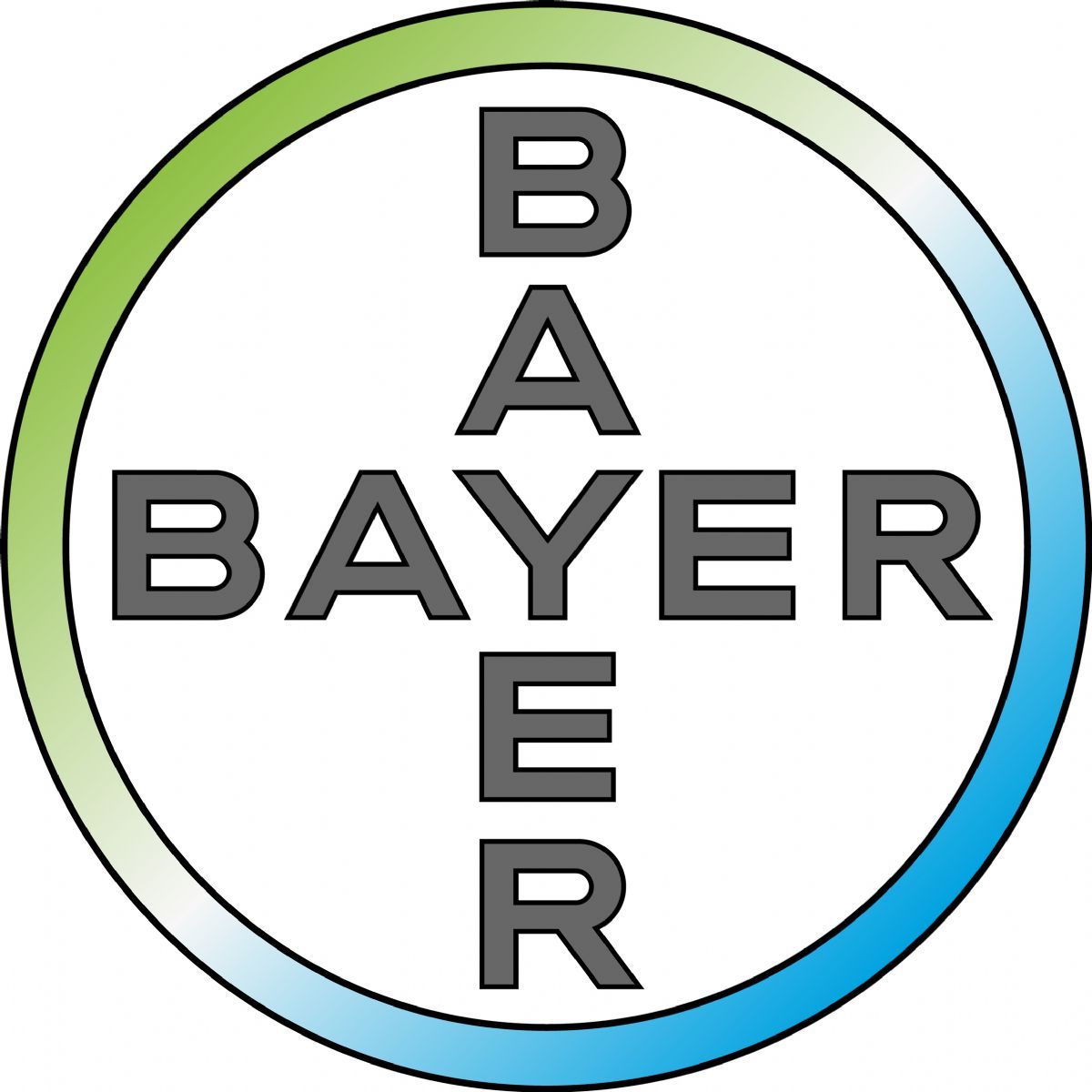预约演示
更新于:2025-12-09

Bayer Corp.
更新于:2025-12-09
概览
关联
1
项与 Bayer Corp. 相关的临床试验NCT00000738
Randomized, Double-Blind, Placebo-Controlled Trial of Nimodipine for the Neurological Manifestations of HIV-1
PRIMARY: To assess the safety of nimodipine in the treatment of HIV-Associated Motor / Cognitive Complex (formerly AIDS dementia complex). To assess the systemic or central nervous system toxicities (e.g., rash, headache, gastrointestinal symptoms, nausea, dyspnea, muscle pain or cramp, acne) of nimodipine.
SECONDARY: To assess the efficacy of nimodipine in stabilizing the progression of HIV-Associated Motor / Cognitive Complex by improvement in neuropsychological test performance, peripheral neuropathy, or other neurologic manifestations.
HIV-infected patients may develop a condition known as HIV-Associated Motor / Cognitive Complex (also known as AIDS dementia complex) that causes damage to the nervous system, particularly the brain and spinal cord. Evidence exists that nimodipine protects nerve cells in culture from injury by HIV. Although nimodipine has been used in patients with other neurological problems, its safety and effectiveness in halting the progression of HIV-Associated Motor / Cognitive Complex is not yet known.
SECONDARY: To assess the efficacy of nimodipine in stabilizing the progression of HIV-Associated Motor / Cognitive Complex by improvement in neuropsychological test performance, peripheral neuropathy, or other neurologic manifestations.
HIV-infected patients may develop a condition known as HIV-Associated Motor / Cognitive Complex (also known as AIDS dementia complex) that causes damage to the nervous system, particularly the brain and spinal cord. Evidence exists that nimodipine protects nerve cells in culture from injury by HIV. Although nimodipine has been used in patients with other neurological problems, its safety and effectiveness in halting the progression of HIV-Associated Motor / Cognitive Complex is not yet known.
开始日期- |
100 项与 Bayer Corp. 相关的临床结果
登录后查看更多信息
0 项与 Bayer Corp. 相关的专利(医药)
登录后查看更多信息
1,053
项与 Bayer Corp. 相关的文献(医药)2025-03-01·JACC. Advances
Embracing Generative Artificial Intelligence in Clinical Research and Beyond
Article
作者: Hornik, Christoph P ; Bugin, Kevin ; Lindsay, Alistair C ; Hernandez, Adrian F ; Goyal, Nitender ; Foote, Henry P ; Lindsell, Christopher J ; Embi, Peter J ; Ozer, Kerem ; Jackman, Jennifer G ; Dreyer, Nancy ; Seidel, Jan ; Stockbridge, Norman ; Anwar, Mohd ; Fessel, Josh ; Borentain, Maria ; Hong, Chuan ; Matheny, Michael E ; Hanger, Morgan
To explore threats and opportunities and to chart a path for safely navigating the rapid changes that generative artificial intelligence (AI) will bring to clinical research, the Duke Clinical Research Institute convened a multidisciplinary think tank in January 2024. Leading experts from academia, industry, nonprofits, and government agencies highlighted the potential opportunities of generative AI in automation of documentation, strengthening of participant and community engagement, and improvement of trial accuracy and efficiency. Challenges include technical hurdles, ethical dilemmas, and regulatory uncertainties. Success is expected to require establishing rigorous data management and security protocols, fostering integrity and trust among stakeholders, and sharing information about the safety and effectiveness of AI applications. Meeting insights point towards a future where, through collaboration and transparency, generative AI will help to shorten the translational pipeline and increase the inclusivity and equitability of clinical research.
2024-10-01·Kidney Medicine
Hyperkalemia Incidence in Patients With Non-Dialysis Chronic Kidney Disease: A Large Retrospective Cohort Study From United States Clinical Care
Article
作者: Pecoits-Filho, Roberto ; Beeman, Scott ; Edfors, Robert ; Schuchhardt, Johannes ; van Boemmel-Wegmann, Sascha ; Hartenstein, Alexander ; James, Glen ; Bauer, Chris ; Pessina, Elena
Rationale & Objective:
Estimates of the incidence of hyperkalemia in patients with chronic kidney disease (CKD) vary widely. Our objective was to estimate hyperkalemia incidence in patients with CKD from routine clinical care, including by level of kidney damage or function and among important patient subgroups.
Study Design:
Retrospective cohort study.
Setting & Participants:
1,771,900 patients with stage 1-4 CKD identified from the US Optum De-Identified electronic health records database.
Exposures or Predictors:
Impaired kidney damage or function level at baseline based on urinary albumin-creatinine ratio (UACR) and estimated glomerular filtration rate (eGFR), respectively, and selected patient subgroups.
Outcomes:
Hyperkalemia: 2 elevated serum potassium values (≥5.5 mmol/L) from the inpatient setting (2-24 hours apart) or outpatient setting (maximum 7 days apart), or 1 elevated serum potassium value plus pharmacotherapy initiation or hyperkalemia diagnosis (maximum 3 days apart).
Analytical Approach:
Incidence rates of hyperkalemia were calculated. Estimates were stratified by UACR and eGFR level at baseline and patient subgroups.
Results:
Over a mean follow-up of 3.9 years, the incidence of hyperkalemia was 3.37 events/100 person-years (95% confidence intervals, 3.36-3.38). Higher incidence rates were observed with increased UACR and lower eGFR. Highest rates were observed with UACR ≥3,500 (up to 19.1/100 person-years) irrespective of decreased eGFR level. High rates also occurred in patients with type 2 diabetes mellitus (T2DM, 5.43/100 person-years), heart failure (8.7/100 person-years), and those prescribed steroidal mineralocorticoid receptor antagonists (sMRAs, 7.7/100 person-years).
Limitations:
Potential misclassification of variables from possible medical coding errors; potential data incompleteness issues if patients received care at institutions not included in Optum.
Conclusions:
Hyperkalemia is a frequent occurrence in CKD, particularly in patients with T2DM, heart failure, or prescribed sMRAs, indicating the need for regular serum potassium and UACR monitoring in this patient population to help mitigate risk.
2022-12-01·Journal of colloid and interface science
Recombinant factor VIII protein aggregation and adsorption at the liquid-solid interface
Article
作者: Chae, Inseok ; Lee, Seung-Wuk ; Sundaram, Jagan ; Han, Andy
Undesired aggregation and adsorption of therapeutic proteins during manufacturing and administration processes can significantly decrease the efficacy of protein drugs, especially when a quantitative treatment is critical. In this study, we investigate molecular interactions of recombinant factor VIII (rFVIII), a therapeutic protein for hemophilia A treatment, at a static liquid-glass interface. We quantitatively analyze the adsorption and aggregation of rFVIII using atomic force microscopy (AFM), dynamic light scattering (DLS) and UV-Vis spectroscopy. We also investigate how PEGylation, temperature, ionic strength and pH affect the rFVIII aggregation and adsorption at the interface over time. The aggregation and adsorption of rFVIII are significantly reduced by decreasing electrostatic attractions in the solution. We observed that the PEGylation endows rFVIII molecules with high stability at the liquid-glass interface in a wide range of temperature, ionic strength and pH. Our studies will help to understand the molecular interactions of how proteins aggregate and adsorb on the solid surface and prevent the undesired events in pharmaceutical applications.
16
项与 Bayer Corp. 相关的新闻(医药)2025-11-17
Puhe BioPharma and Youngen Technology are the first test cases for the Bayer model.\n Bayer has built a home for Chinese biopharma companies. Located in Beijing, the Bayer E-Town Open Innovation Center will incubate local biotechs starting with Puhe BioPharma and Youngen Technology. The company broke ground on the site in 2023 and unveiled the facility earlier this year. Bayer shared details of the official opening Saturday, fleshing out its plans for the site to incubate local companies and help bring drugs discovered in China to global markets. China has become a major source of new drug candidates in recent years.“China is increasingly becoming a key driver of global pharmaceutical R&D,” Anastasia Hager, head of drug discovery sciences at Bayer, said in a Nov. 15 statement. “The grand opening of the Bayer E-Town Open Innovation Center will further strengthen collaboration and allow more scientific breakthroughs from China to reach patients around the world.”Staff at the E-Town facility will work with Bayer’s existing Co.Lab Connect Beijing to give local companies access to global resources and collaboration networks. Bayer envisages the site supporting the growth of local startups by further integrating them into the global healthcare system.Puhe and Youngen are the first test cases for the model. Bayer struck a deal with Puhe in March to bag global rights to a small molecule PRMT5 inhibitor. A first-in-human study is underway in patients with MTAP-deleted solid tumors.Multiple companies have identified PRMT5 inhibition as an anticancer mechanism. Amgen and Ideaya Biosciences have PRMT5 inhibitors in development, while BeiGene bought a spot in the race late last year. Meanwhile, Tango Therapeutics reported a setback to one of its PRMT5 inhibitors last year, driving it to pivot to other molecules that hit the target. GSK picked up rights to a PRMT5 program from Epizyme, only to ax the asset. Youngen, the other initial E-Town occupant, is developing siRNA therapies for high blood pressure, lipid disorders and other diseases. As Youngen works to enter the clinic, Bayer Co.Lab will support its work.

2025-10-31
在史蒂文斯理工学院,科研不只是实验室里的公式与数据,更是一场关于创新、实践与突破的旅程。
我们的本科学习不止于课堂,更深入探索未知研究,用创意和好奇心,点亮科技的未来。
从人工智能与制药研究,到可持续航空燃料、生物活性分子合成,再到天体物理的超分辨率成像……史蒂文斯的学生们正以惊人的科研实力,参与塑造世界的明天。
用AI加速新药研发
Miles Cabreza
2026届
生物医学工程专业
导师:Pin-Kuang Lai副教授(化学工程与材料科学系)
Miles的研究聚焦于利用深度学习AI分析抗体药物,预测其吸收与代谢表现。这是能显著加快药物研发进程的突破性方向。
Miles表示:
“人工测试药物太耗时也昂贵,而AI预测能极大提升研发效率。”
他的模型如今已被开发成线上应用,供全球科研人员使用,并已发表在Molecular Pharmaceutics期刊上。
他希望未来能在生物制药领域继续研究癌症治疗:
“AI和蛋白语言模型将成为精准医疗的重要工具,我希望成为这场AI革命的一部分。”
把藻类变成可持续航空燃料
Eva Baker
2027届
化学工程专业
导师:Adeniyi Lawal教授(化学工程与材料科学系主任)
Eva的研究致力于将藻类转化为可持续航空燃料(SAF)。她在导师实验室中操作反应器、监控催化反应、测定产率,用化学工程的力量探索能源转型的可能。
“航空业约占全球碳排放的2.5%,而藻类是一种几乎可在任何水域生长的可再生能源。”
Eva表示,这项研究让她更坚定了在可持续能源领域深造的目标:
“未来我想研究碳捕获,让能源更清洁、地球更绿色。”
从分子构建到新药合成
Alex Cunney
2027届
化学生物学专业
导师:Abhishek Sharma副教授(化学与化学生物学系)
在Sharma实验室,Alex专注于研究新型有机硼化合物的化学性质,这些分子结构有望简化药物合成流程,为药物发现带来新思路。
“我喜欢在实验台前动手操作的感觉,那是我小时候梦想成为的科学家时刻。”
未来,Alex希望攻读博士,投身药物研发,并最终投身教育,让复杂的化学知识变得更易懂、也更有趣。
量子灵感下的天体超分辨率成像
Isabella Lee
2028届
数学与物理专业
导师:Xiaofeng Qian助理教授(物理系)
Isabella的研究听起来就像一场科幻冒险:她与Qian教授团队一起,利用量子启发的算法与机器学习技术,突破观测极限,成功将两个彼此靠得极近的天体“分离”出来。
“我们的方法可用于观测双黑洞系统、双星轨道,也可应用于细胞成像,甚至区分DNA的活跃与非活跃区域。”
这项研究不仅连接了天体物理与生物医学影像,也让Isabella更坚定了成为科研型教授的理想:
“科研的魅力,在于把宇宙与生命的奥秘,一点点揭开。”
科研,史蒂文斯精神的延伸
作为史蒂文斯的本科生,科研不仅能收获一段学习经历,更能全方位锻炼创新精神、批判性思维与实际操作能力。
正如本科生科研与奖学金办公室主任Andrés Mansisidor所说:
“科研能激发创造力,磨炼思维方式,让学生们真正理解‘发现’的意义,并有能力更好地迎接未来挑战。”
“人文启迪,科技助力”。
在史蒂文斯,科研不只是知识的延伸,更是创造的起点。关注我们,成为下一个改变世界的“Duck”🦆。
点击文末「阅读原文」
进入中文官网
获取更多课程及学校详情
和史蒂文斯一道探索未来新篇章!
往期推荐
以代码为基,以热爱为名|通过史蒂文斯计算机科学硕士点亮数字未来
2025-10-14
10月29日,史蒂文斯「硕士线上申请研讨会」期待你加入!
2025-10-22
⇑
长按识别二维码
添加「史蒂文斯小助手」
咨询课程、申请等相关问题
放射疗法
2025-10-30
NEW YORK--(BUSINESS WIRE)--Helex, a therapeutics company developing a new class of targeted medicines for genetic kidney diseases, today announced its oversubscribed $3.5 million Seed round, led by pi Ventures, with participation from Bluehill Capital, SOSV, and a global syndicate of investors. With this round, Helex has raised over $6 million in total funding to date.
“This is more than a new treatment; it’s a new hope for patients with ADPKD. We’re developing a transformative therapy that will be accessible and affordable for every patient who needs it.”
Dr. Poulami Chaudhuri, Co-founder and CEO, Helex
Helex is pioneering a paradigm shift in the treatment of chronic and rare kidney disorders by developing programmable non-viral lipid nanoparticle (LNP) therapeutics that deliver therapeutic cargo directly to kidney cells, a feat long regarded as one of the greatest challenges in drug delivery. By solving for delivery to the kidney, Helex opens the door to a new class of targeted, disease-modifying medicines for millions of patients who currently have no effective treatment options.
The company’s lead program targets Autosomal Dominant Polycystic Kidney Disease (ADPKD), an inherited disorder, caused primarily by mutations in the PKD1 or PKD2 genes, that affects more than 12 million people worldwide, leading to gradual formation of kidney cysts and decline in renal function. Today, patients with ADPKD face a devastating trajectory, often culminating in dialysis or kidney transplant. Helex aims to change that with a single dose non-viral gene editing based therapy that could halt or significantly slow disease progression.
“This is more than a new treatment; it’s a new hope,” said Dr. Poulami Chaudhuri, co-founder and CEO of Helex. “For far too long, patients with ADPKD have had to rely only on symptom management, with no true disease-modifying options. We wish to change that. By enabling targeted delivery of genomic medicines directly to the kidney, we are developing a transformative therapy that is also accessible and affordable for every patient who needs it. This seed round marks just the beginning of our journey.”
“ADPKD represents a significant unmet medical need, with current treatments limited to symptom management and not effective for all patients,” said Roopan Aulakh, Managing Partner at pi Ventures. “Gene therapies are emerging as one of the most promising frontiers in medicine. Helex’s first-in-class mechanism of action has the potential to be a curative therapy and positions the company to build a differentiated pipeline of therapies for kidney diseases. We are thrilled to back this world-class team.”
Helex was founded by three friends, long-time collaborators and alumni of King’s College London: Dr. Poulami Chaudhuri (CEO) brings significant expertise on non-viral delivery and solving for genetic diseases, Rohini Kalvakuntla (CBO) brings extensive business development experience and working with payers on pricing novel treatments like cell and gene therapies, and Anirudh Nishtala, (COO) brings over a decade of experience in drug development, sales and operations. The company also announced the appointment of Dr. Suman Alishetty, a lipid expert and previous scientific co-founder of AexeRNA (acquired by BioNTech) as Vice President of Drug Delivery.
“As the first investor in Helex, I’ve had the privilege of watching the founding team turn one of biotech’s hardest challenges, kidney-targeted delivery, into a real, clinically meaningful opportunity,” said Stephen Chambers, General Partner at SOSV and Managing Director at IndieBio. “By combining proprietary kidney-tropic LNPs with their AI-driven Epic-Cure™ platform, Helex is building a pipeline with the potential to transform outcomes for millions of patients with genetic kidney diseases. This is the kind of company we back at SOSV - bold, mission-driven, and capable of shaping the future of medicine.”
The new funding will support the development of Helex’s lead program for ADPKD toward IND enabling studies, pipeline expansion leveraging its programmable LNP delivery and AI-based drug design platforms. The company is steadfast in building a robust franchise of renal programs that profoundly improve and impact the lives of patients.
About Helex
Helex is a therapeutics company developing a new class of targeted medicines for genetic kidney diseases using its proprietary LNP drug delivery and AI-based drug design platforms. With a world-class team of scientists and drug developers, Helex operates from New York, USA, and ASPIRE BioNEST, Hyderabad, India, and is supported by Bayer Co.Lab Cambridge. For more information, visit https://www.helex.bio/.

高管变更基因疗法
100 项与 Bayer Corp. 相关的药物交易
登录后查看更多信息
100 项与 Bayer Corp. 相关的转化医学
登录后查看更多信息
组织架构
使用我们的机构树数据加速您的研究。
登录
或

管线布局
2026年01月07日管线快照
管线布局中药物为当前组织机构及其子机构作为药物机构进行统计,早期临床1期并入临床1期,临床1/2期并入临床2期,临床2/3期并入临床3期
其他
4
登录后查看更多信息
当前项目
| 药物(靶点) | 适应症 | 全球最高研发状态 |
|---|---|---|
重组人凝血因子VIII(Bayer AG) ( F10 ) | 血友病A 更多 | 撤市 |
Fidanacogene elaparvovec ( factor IX ) | 血友病B 更多 | 终止 |
尼莫地平 ( Cav2.1 ) | 艾滋病痴呆复合征 更多 | 无进展 |
BAY-11-7083 ( TNF-α ) | 炎症 更多 | 无进展 |
登录后查看更多信息
药物交易
使用我们的药物交易数据加速您的研究。
登录
或

转化医学
使用我们的转化医学数据加速您的研究。
登录
或

营收
使用 Synapse 探索超过 36 万个组织的财务状况。
登录
或

科研基金(NIH)
访问超过 200 万项资助和基金信息,以提升您的研究之旅。
登录
或

投资
深入了解从初创企业到成熟企业的最新公司投资动态。
登录
或

融资
发掘融资趋势以验证和推进您的投资机会。
登录
或

生物医药百科问答
全新生物医药AI Agent 覆盖科研全链路,让突破性发现快人一步
立即开始免费试用!
智慧芽新药情报库是智慧芽专为生命科学人士构建的基于AI的创新药情报平台,助您全方位提升您的研发与决策效率。
立即开始数据试用!
智慧芽新药库数据也通过智慧芽数据服务平台,以API或者数据包形式对外开放,助您更加充分利用智慧芽新药情报信息。
生物序列数据库
生物药研发创新
免费使用
化学结构数据库
小分子化药研发创新
免费使用